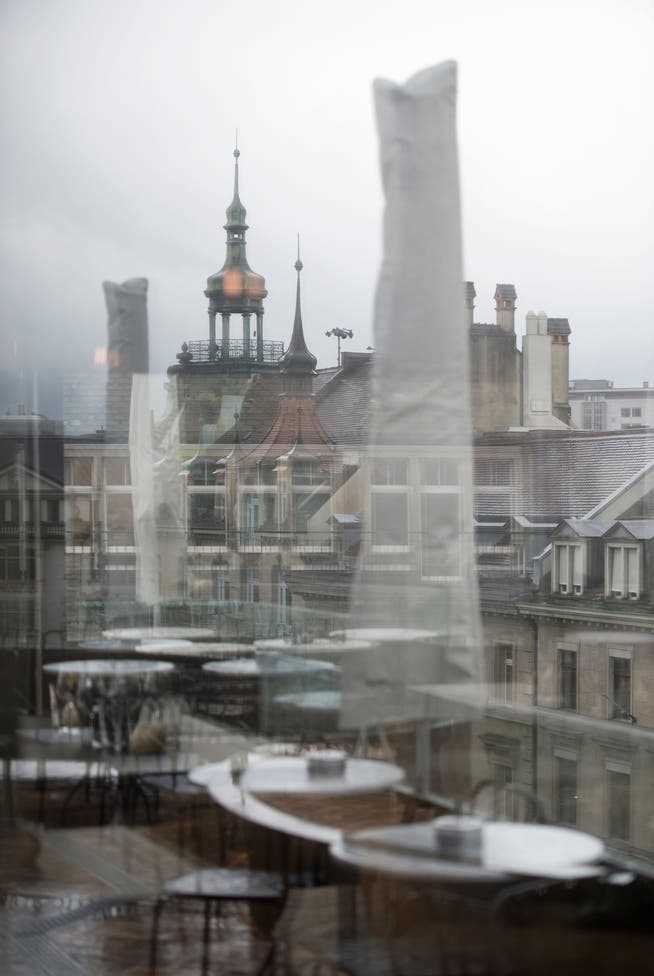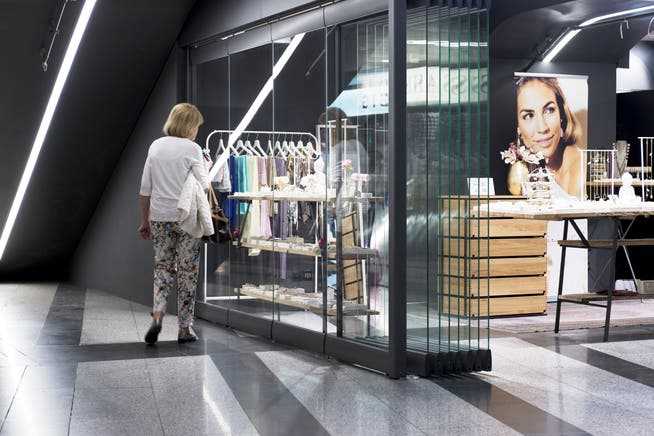During the crisis, Swiss Post transported more parcels than ever before, and online trade was exploding. This has consequences for Swiss cities. Even in prime locations, bars are empty. Experts recognize precisely this as a sign of a revival of the centers.
The lockdown has finally made it clear to customers that going to the store is no longer worthwhile for many purchases.
The forthcoming easing also means a return to the old normal for the cities. But Corona has changed the starting position in the centers, probably forever. Months of home office and closed shops during the first lockdown have finally made it clear to customers that it is no longer worth going to the store for many purchases. Conveniently choose on your cell phone or laptop and have it delivered to your home – this new shopping world has definitely become mainstream with the pandemic.
For example, Swiss Post delivered 200 million parcels last year – that is 35 percent more than in 2019. In online retail, sales grew faster in the first year of Corona than in the previous nine years. January showed how this dynamic is affecting inner cities: the fashion house Modissa, which had completely renovated its location on Zurich’s Bahnhofstrasse just seven years ago, announced its withdrawal. The house said the pressure on retailers had increased too much in recent years. The pandemic caused further setbacks and finally gave the fashion house the rest, the company explained to the “Tages-Anzeiger”.

Restaurants are closed. In the picture a shopping center in Wallisellen in March 2021.
CS warns of a vicious circle
The closure of Modissa is not an isolated case. Whether in Basel, Bern or St. Gallen, shops in the inner cities are suddenly empty, even in excellent locations. Traditional houses close because the business is no longer worthwhile. International labels often leave locations after just a few years. The tenants of shops are changing at ever shorter intervals. Up to now, shop windows that have been taped over, empty sales areas and bleak makeshift arrangements have shaped the picture in smaller towns in particular. Now it is increasingly hitting the metropolises.
Where retail space remains unused, the fear of a downward spiral grows. “Corona is throwing former top locations out of joint,” stated the Zürcher Kantonalbank in a report a year ago, just as the second corona wave was sweeping through Switzerland. In a report, Credit Suisse even warned of a vicious circle: “Empty areas reduce the attractiveness of a city center, consumers tend to stay away, which ultimately results in even lower frequencies. This not only affects retailers, but cities as a whole.”
Paul Schneeberger and Joris Van Wezemael also describe the blossoming of the mail order business as a “big bold trend” during the Corona crisis. The author duo, who have been dealing with settlement development in Switzerland for years, have just written a book entitled “Dezentralschweiz” on the consequences of the pandemic for living spaces in Switzerland.
However, the crisis did not necessarily set new trends in the inner cities, Schneeberger and Van Wezemael put it into perspective. Instead, it strengthened and accelerated developments that had already started earlier. Mathias F. Böhm, Managing Director of the Basel city management “StadtConceptBasel”, sees it similarly. The pandemic has not caused a break, but has reinforced ongoing changes and made them visible, he explains. The pandemic may have left its mark, but economic aid from the federal government and the cantons was able to prevent many business closures.

Problem zone downtown: It’s all about the mix.
Electronics giants are dying
Even before the corona pandemic, it became apparent that the centers were losing their function as walk-in warehouses where the widest possible range of products can be found in a small space: “Fewer and fewer people are visiting the city centers today just to shop. The full range is losing importance,” explains Böhm. It is therefore no coincidence that several shoe and clothing stores in Basel have had to close down in recent years, the store concepts of which had practically not changed over the years. The extinction of the large branches for consumer electronics also began before Corona.
Digitization and in particular the advent of home office have, however, given people more freedom in organizing their daily routines – with consequences: “If people are less forced to frequent the inner cities, these spaces have to move from places they have to to places they want be transformed,” argue Schneeberger and Van Wezemael. “In the future, cities will have to be places where people feel comfortable,” agrees Böhm. All three also see the consequences of the Corona crisis as an opportunity to reassess and use the potential of the cities.
For Böhm, it is not just a bad sign that more and more shops are empty and shops are disappearing in the cities. This shows that change is underway and offers new opportunities for more attractive and contemporary concepts. While the shopping streets in European cities have become more and more similar since the 1990s, the special mix of shops, services and restaurants has recently become more important again. At the same time, retailers have to link digital and conventional trade in the cities in order to better reach their customers. Less boredom means more audience. The inner cities are developing into adventure zones in which the idea of supply only plays a limited role.

Pop-up store in Shop-Ville: tenants change faster.
Exclusivity and craftsmanship are trumps
In fact, new providers from new industries are establishing themselves – financial service providers, wellness and health practices or car brands. Tesla, for example, is already present in several inner cities. Pop-up stores or vintage shops, local boutiques, but also exclusive luxury offers create more uniqueness. Handicrafts also appeal to many customers more on an emotional level than off-the-shelf goods.
From Böhm’s point of view, the availability of mass goods on digital platforms is not the only driver: Owning as many products as possible is out for the younger generation. Authenticity and uniqueness are more important. Those who cannot convey a special shopping experience to their customers will have a difficult time in the future.
No one therefore believes that inner cities will become less attractive – on the contrary, according to Böhm: “People need places to meet, and cities have always fulfilled this function. The only question is how to design this space in the future.” According to almost all experts, the development of urban centers will become more demanding. This is also because more and more different needs are being satisfied there. The number of cultural events in public space has been increasing for years. “Inner cities can become even more of a stage, a meeting place, a place for people to exchange ideas,” says Schneeberger.
In this way, the city associations are also changing from being purely lobby and marketing offices for the retail trade to professional project organisations. A few years ago, Basel’s “Pro Innerstadt” switched from a purely voluntary structure to a professional structure with several employees. And since last year, the organization has been known as “StadtConceptBasel”. Last but not least, the change also has consequences for real estate owners: With the ground floors losing importance as a sales driver, lower rental income is becoming apparent – or as the authors of “Dezentralschweiz” put it: “In the future, the focus will increasingly be on consuming time instead of products.”
From the point of view of Schneeberger and Van Wezemael, the consequences of the corona crisis for the development of cities in the long term can only be estimated to a limited extent. But they are already recognizing the next trend – the revitalization of small centers and peripheral districts: neighborhood and village shops, the authors state, have finally made a comeback in the home office era.
